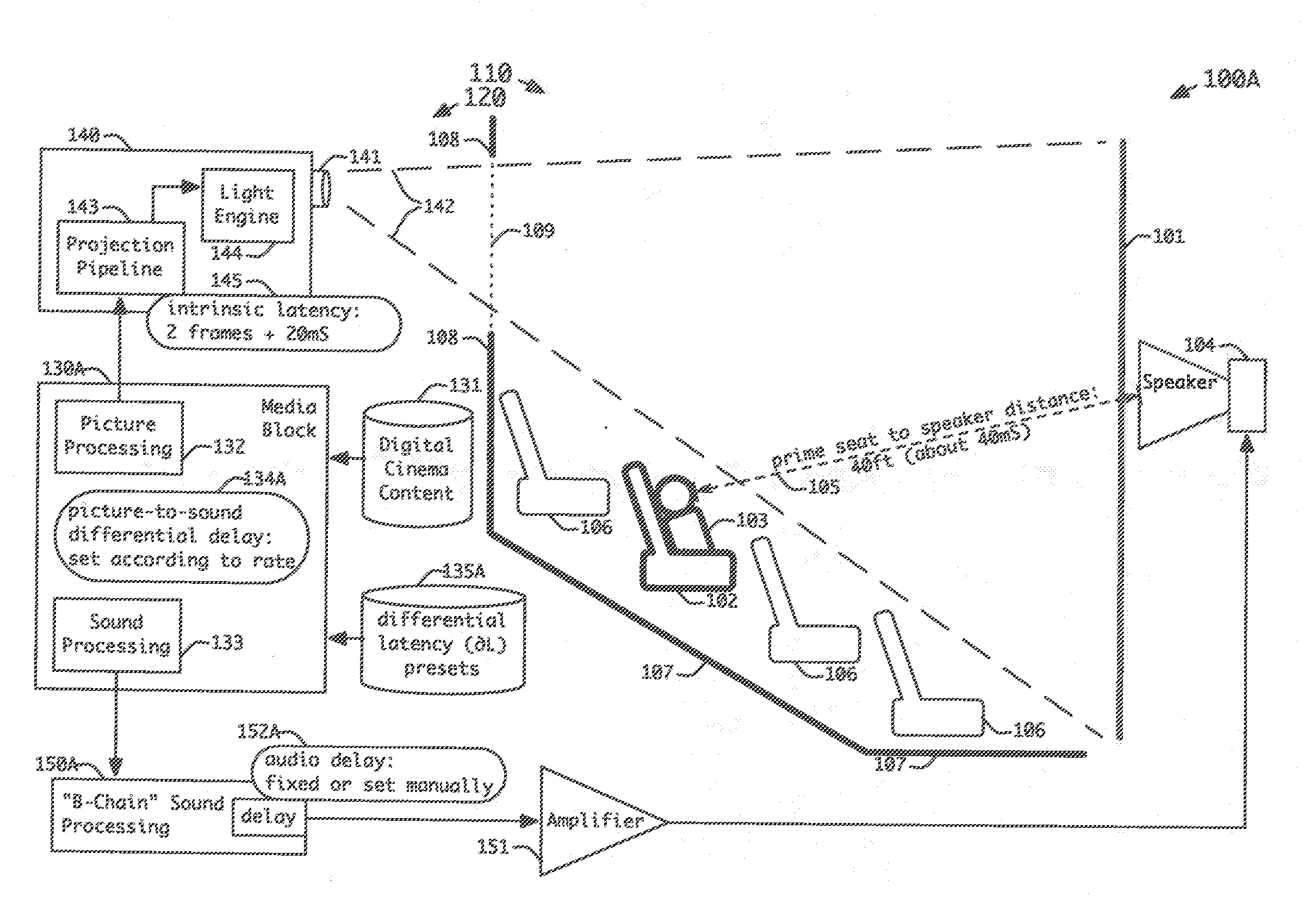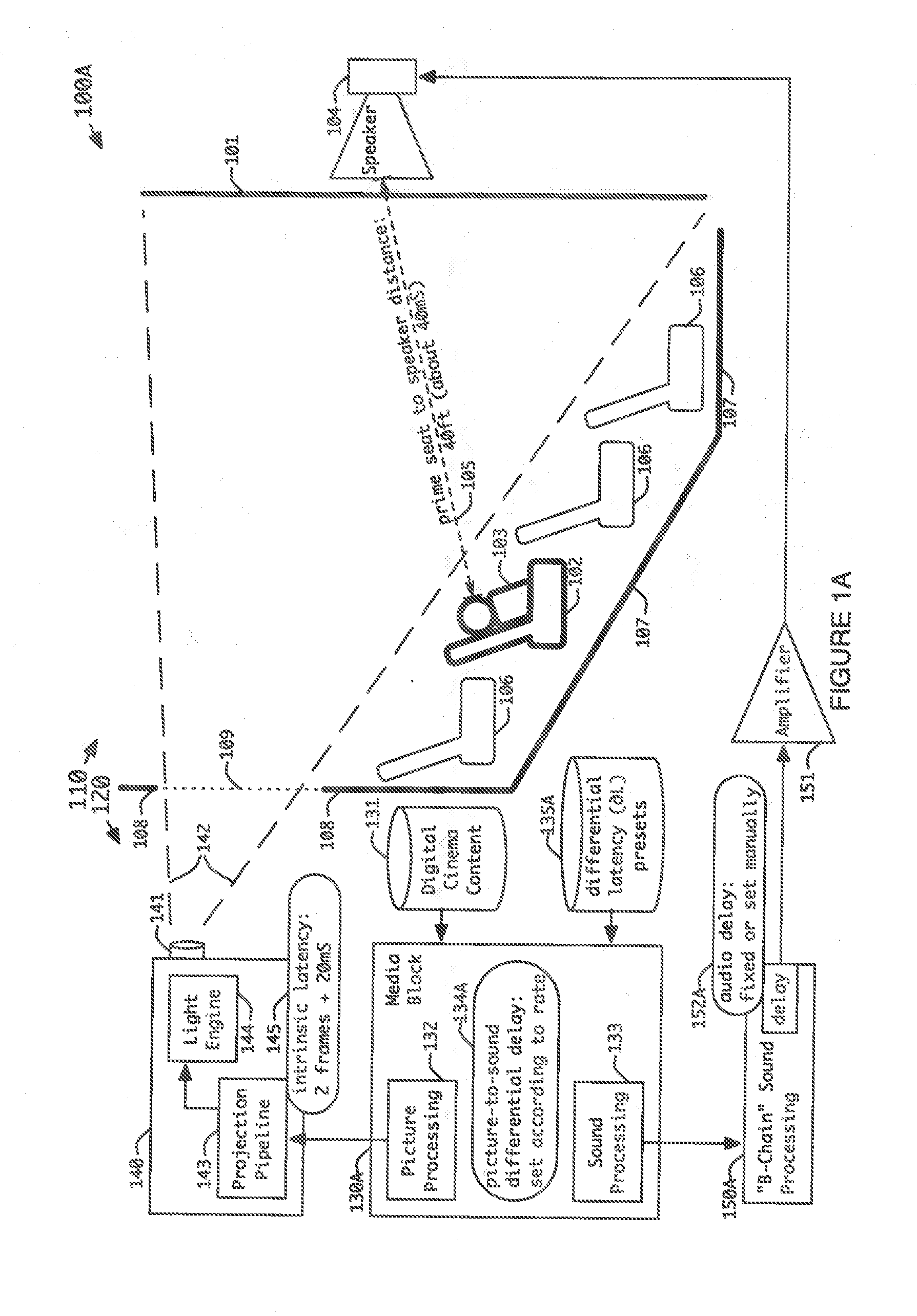Method and apparatus for adapting audio delays to picture frame rates
a delay and picture technology, applied in the field of synchronizing sound (audio) information to picture (video) information, can solve the problems of projector latency, general variation, and commercial digital cinema devices not offering the option to alter the frame ra
- Summary
- Abstract
- Description
- Claims
- Application Information
AI Technical Summary
Benefits of technology
Problems solved by technology
Method used
Image
Examples
Embodiment Construction
[0033]FIGS. 1A and 1B depict exemplary block diagrams of first and second illustrative embodiments, respectively, of digital cinema theatre systems 100A and 100B, respectively, for practicing the sound and picture information synchronization technique of the present principles. Referring to FIG. 1A, the digital theater system 100A comprises a digital cinema digital cinema media block 130A for rendering multiple digital cinema compositions received at their specified frame rates from a digital cinema composition storage unit 131. The digital cinema media block 130A provides the rendered pictures to a digital cinema projector 140 and the corresponding sound to a theatrical sound processing system 150A (also known in the industry as a “B-chain”). As discussed in detail herein, the digital cinema compositions can have different frame rates. Presently, most digital cinema compositions have a frame rate of 24 frames per second. However, some newer digital cinema compositions now have high...
PUM
 Login to View More
Login to View More Abstract
Description
Claims
Application Information
 Login to View More
Login to View More - R&D
- Intellectual Property
- Life Sciences
- Materials
- Tech Scout
- Unparalleled Data Quality
- Higher Quality Content
- 60% Fewer Hallucinations
Browse by: Latest US Patents, China's latest patents, Technical Efficacy Thesaurus, Application Domain, Technology Topic, Popular Technical Reports.
© 2025 PatSnap. All rights reserved.Legal|Privacy policy|Modern Slavery Act Transparency Statement|Sitemap|About US| Contact US: help@patsnap.com



